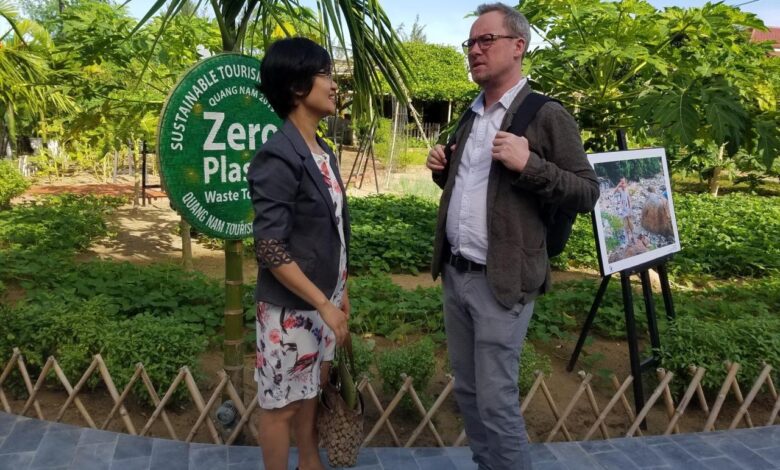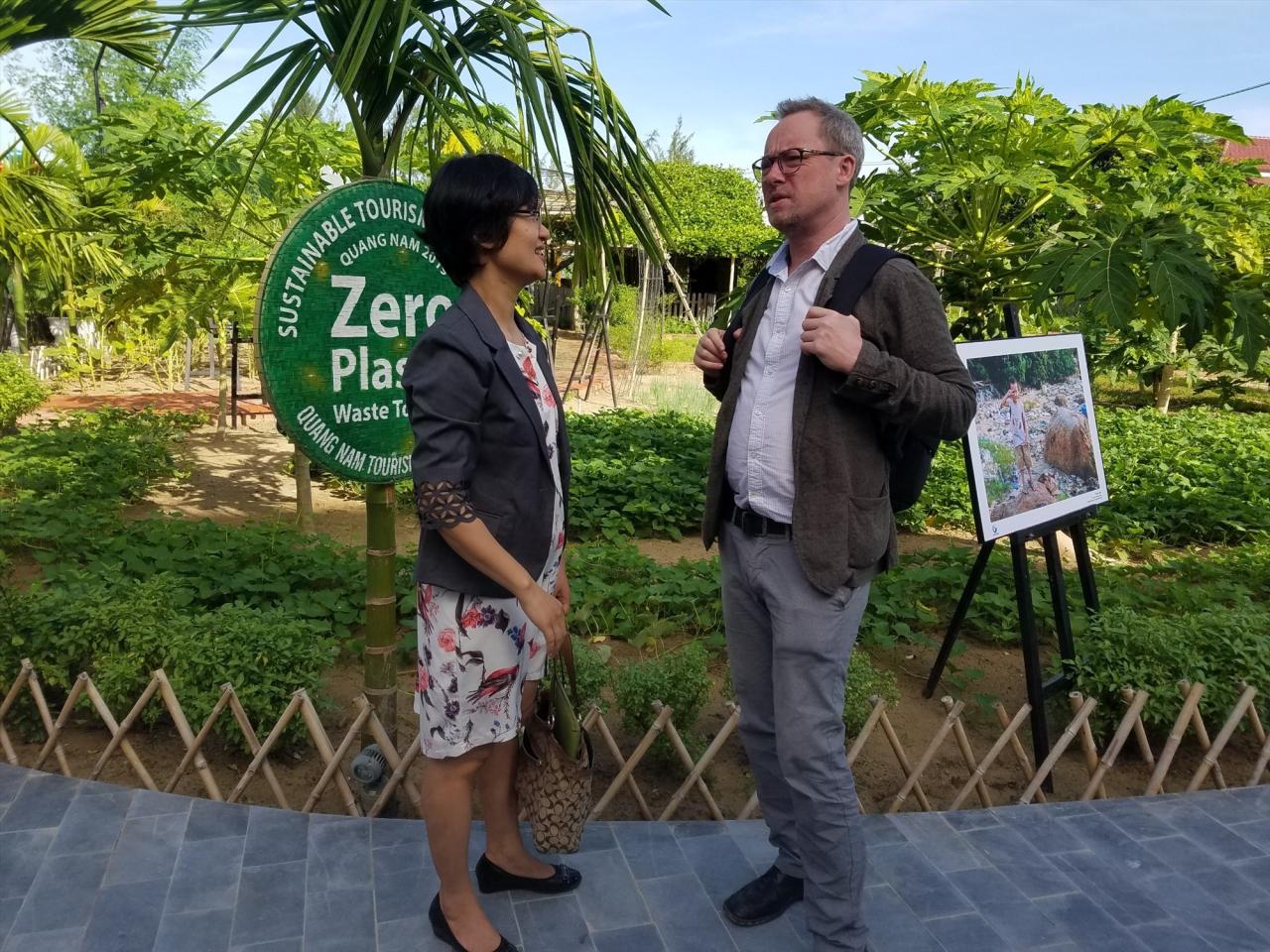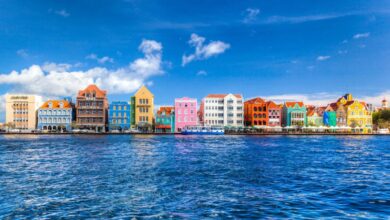Strategic Travel Subsidies Reshape Tourism Recovery

The New Economics of Destination Marketing
In the aftermath of global travel disruptions, a powerful economic tool has emerged as a primary driver of tourism recovery: strategic travel subsidies. Beyond traditional marketing campaigns, governments and tourism boards worldwide are implementing sophisticated financial incentive programs designed to stimulate visitor return and redistribute tourist flows. These initiatives represent a fundamental shift in destination management—from passive promotion to active economic intervention. From direct cash rebates and flight subsidies to comprehensive experience packages and tax incentives, these carefully calibrated programs are successfully overcoming post-pandemic hesitancy, seasonal imbalances, and competitive market pressures. This comprehensive analysis examines the evolving landscape of travel subsidies, their implementation across global destinations, measurable impacts on recovery metrics, and the emerging ethical considerations as destinations balance short-term recovery with long-term sustainability in an increasingly competitive tourism landscape.
A. The Evolution and Typology of Modern Travel Subsidies
Contemporary travel incentive programs have evolved significantly from simplistic discount models to sophisticated, multi-layered economic instruments.
A.1. Direct Financial Incentive Models
The most immediate and measurable subsidies involve direct financial transfers to travelers or operators.
-
Cash-Back and Rebate Programs: Destinations like Hong Kong and Thailand have implemented sophisticated rebate systems where visitors receive predetermined amounts upon submitting proof of eligible expenditures, effectively reducing their net travel costs while ensuring spending within the local economy.
-
Flight Subsidy Partnerships: Numerous destinations including Cyprus, Malta, and various Caribbean nations have established co-funding agreements with airlines to reduce airfare costs on specific routes during target periods, addressing the primary cost barrier to long-haul travel.
-
Strategic Discount Vouchers: Rather than blanket discounts, destinations like Switzerland and Austria have developed targeted voucher systems applicable to specific sectors (museums, transportation, guided tours) to direct tourist spending toward underutilized attractions and services.
A.2. Indirect and Experiential Subsidy Structures
More nuanced approaches create value without direct price reduction, often yielding higher-value visitors.
-
Complementary Experience Packages: Programs like Hawaii’s “Resort Credit” initiative provide substantial credits toward premium experiences (spa treatments, fine dining, adventure tours) rather than reducing room rates, maintaining perceived value while encouraging upgraded spending.
-
“Spend-More-Save-More” Tax Incentives: Jamaica and several European destinations have implemented temporary tax rebates triggered when tourist spending exceeds specific thresholds, effectively rewarding extended stays and higher expenditure patterns.
-
Loyalty Tier Acceleration: Several hotel chains and destination partnerships have created status-matching and accelerated loyalty programs that provide immediate elite benefits, leveraging the psychological value of recognition alongside tangible perks like room upgrades and lounge access.
A.3. Hybrid and Conditional Subsidy Frameworks
The most advanced programs combine multiple approaches with specific behavioral requirements.
-
Regional Distribution Incentives: Japan’s sophisticated subsidy program offers additional incentives for travelers who visit less-frequented prefectures alongside major cities, actively redistributing tourist traffic beyond overcrowded hotspots.
-
Off-Season Value Enhancements: Mediterranean destinations like Greece and Croatia provide substantially larger subsidies during traditional shoulder and low seasons, creating compelling value propositions that extend the tourism calendar.
-
Sustainable Practice Rewards: Costa Rica’s pioneering certification program provides financial benefits to tourists who choose environmentally certified accommodations and tour operators, aligning economic incentives with sustainability objectives.
B. Global Implementation Case Studies and Outcomes
Destination-specific implementations reveal distinctive approaches tailored to unique recovery challenges and opportunities.
B.1. Asia-Pacific: Structured Recovery Through Strategic Intervention
Asian destinations have implemented some of the most comprehensive subsidy frameworks with measurable results.
-
Thailand’s “We Travel Together” Initiative: This multifaceted program combined hotel subsidies (40% discount), dining credits, and insurance coverage, generating over 30 million room nights and demonstrating the multiplicative effect of comprehensive packages that address multiple traveler concerns simultaneously.
-
Hong Kong’s “Hello Hong Kong” Campaign: Featuring 500,000 free airline tickets and consumption vouchers, this program successfully rebuilt airline connectivity while ensuring downstream economic benefits through required spending in the destination.
-
Singapore’s Tourism Recovery Fund: Beyond direct visitor subsidies, this program strategically co-funded industry capabilities development alongside demand stimulation, creating a more resilient tourism ecosystem prepared for returning visitors.
B.2. European Redistribution and Season Extension Models
European implementations have focused heavily on addressing overtourism and seasonal concentration.
-
Portugal’s “Live and Feel the Azores” Program: This innovative subsidy specifically targets secondary destinations within the country, offering substantial travel discounts for visitors who include the Azores in their itineraries, successfully diverting traffic from overcrowded Lisbon and Porto.
-
Italy’s “Tourism Bonus” for Families: Specifically designed to support domestic tourism, this means-tested subsidy enabled lower-income Italian families to vacation in domestic destinations, maintaining economic activity in tourism-dependent communities during international travel pauses.
-
Iceland’s “Inspired by Iceland” Voucher System: This carefully calibrated program distributed digital vouchers for specific experiences and regions beyond the Golden Circle, successfully extending visitor stays and geographic distribution.
B.3. Americas: Market-Specific Recovery Initiatives
North and South American programs have demonstrated remarkable adaptability to diverse market conditions.
-
Mexico’s “Travel for Sure” Program: Unique in offering comprehensive insurance covering COVID-related interruptions alongside traditional subsidies, this initiative directly addressed the primary post-pandemic concern of uncertainty, rebuilding traveler confidence alongside affordability.
-
Aruba’s “One Happy Workation” Package: Recognizing the remote work revolution, this program offered substantial subsidies specifically targeting long-stay visitors, successfully repositioning the destination while maintaining higher-value visitors for extended periods.
-
Chile’s “Reactivation Tourism Fund”: This regional approach allocated different subsidy levels to various geographic zones based on their dependency on tourism and recovery progress, demonstrating sophisticated economic targeting.
C. Measuring Impact: Beyond Simple Visitor Numbers
Sophisticated destinations now evaluate subsidy programs using multidimensional metrics that capture both quantitative and qualitative outcomes.
C.1. Economic Return and Multiplier Effects
The ultimate justification for subsidies lies in their net economic contribution.
-
Direct Revenue Generation Analysis: Advanced tracking in destinations like Singapore has demonstrated that well-designed subsidies generate between $3-5 in direct visitor spending for every $1 of public investment, with particularly strong returns when targeting higher-spending market segments.
-
Employment Preservation Metrics: The most successful programs, including Thailand’s initiative, have demonstrated direct correlations between subsidy availability and tourism employment levels, with measurable impacts on supply chain jobs beyond direct tourism positions.
-
Tax Revenue Generation: Despite initial costs, comprehensive analyses in Cyprus showed that subsidy programs ultimately generated net positive tax revenue through VAT collections and tourism-related business taxes exceeding program expenditures.
C.2. Market Positioning and Competitive Advantage
Subsidies can yield important strategic benefits beyond immediate economic returns.
-
Market Share Recovery Speed: Destinations with aggressive early subsidy programs, including the Maldives and Dubai, captured disproportionate market share during recovery phases, establishing competitive advantages that persisted even after subsidies concluded.
-
Brand Perception and Loyalty Building: Research in Portugal indicated that visitors who initially came due to subsidies demonstrated significantly higher return rates and more positive destination perception than average visitors, creating valuable long-term customer relationships.
-
Product and Experience Innovation: Subsidy requirements in destinations like New Zealand specifically encouraged tourism businesses to develop new experiences and packages, modernizing the tourism offering beyond the subsidy period.
D. Implementation Challenges and Strategic Considerations
Despite their benefits, subsidy programs present significant implementation challenges that require careful management.
D.1. Program Design and Administration Complexities
Effective implementation demands sophisticated operational frameworks.
-
Fraud Prevention Systems: Programs in Malaysia and the Philippines demonstrated the critical need for robust verification systems, with successful implementations incorporating blockchain-based spending tracking and multi-stage claim verification.
-
Administrative Cost Management: Overly complex programs risk consuming disproportionate resources, with optimal designs balancing comprehensive impact measurement with streamlined administration, as demonstrated by Barbados’s simplified digital voucher system.
-
Industry Participation Barriers: Programs must ensure accessibility for small and medium enterprises rather than primarily benefiting large corporations, requiring specific design elements like those incorporated in Bali’s community-based tourism subsidies.
D.2. Market Distortion and Sustainability Concerns
Poorly designed subsidies can create unintended negative consequences.
-
Price Integrity Challenges: Some early programs created long-term consumer expectations of discounted pricing, requiring careful phase-out strategies like those successfully implemented by Mauritius’s graduated subsidy reduction.
-
Quality and Experience Dilution: Programs that simply fill rooms without maintaining experience standards risk damaging destination reputation, making quality assurance components like those in Bhutan’s premium subsidy program essential.
-
Dependency Creation: Sunset provisions and clear exit strategies are critical, as demonstrated by Macau’s carefully communicated limited-time framework that prevented industry dependency on continued subsidies.
D.3. Ethical and Equity Considerations
Subsidies raise important questions about resource allocation and access.
-
Domestic vs. International Visitor Prioritization: Many destinations faced difficult decisions regarding allocating limited resources, with varied approaches including Malaysia’s focus on domestic tourism versus Dubai’s international targeting reflecting different recovery priorities.
-
Geographic Distribution Equity: Programs that primarily benefit already popular areas risk exacerbating tourism concentration, making geographic distribution requirements like those in the Philippines’ regional subsidy program increasingly important.
-
Taxpayer Value Justification: Transparent reporting and clear demonstration of public benefits are essential for maintaining taxpayer support, as shown by Iceland’s comprehensive public impact reporting.
E. The Future Evolution of Travel Subsidies
As the tourism landscape continues to evolve, subsidy programs are adapting to new challenges and opportunities.
E.1. Integration with Sustainability Objectives
The next generation of subsidies increasingly incorporates environmental and social criteria.
-
Carbon-Neutral Incentives: Destinations like Costa Rica are developing subsidy premiums for travelers who choose carbon-neutral transportation and accommodations, aligning economic incentives with climate objectives.
-
Regenerative Tourism Premiums: Emerging programs in New Zealand and Scotland offer additional subsidies for visitors participating in conservation activities or cultural preservation programs, moving beyond traditional tourism to regenerative models.
-
Community Benefit Requirements: New models require participating businesses to demonstrate direct community benefits, such as local hiring and sourcing, as seen in emerging African safari subsidy programs.
E.2. Digital Transformation and Personalization
Technology enables increasingly sophisticated and targeted subsidy implementation.
-
Dynamic Pricing Integration: Future systems may adjust subsidy levels in real-time based on demand forecasting, optimizing economic impact while minimizing market distortion.
-
Behavioral Nudge Subsidies: Drawing on behavioral economics, emerging programs may offer targeted incentives for specific desired behaviors like mid-week travel or off-peak visitation.
-
Blockchain-Based Verification: Distributed ledger technology promises more efficient and transparent subsidy administration while reducing fraud potential.
E.3. Strategic Rebalancing Instruments
Subsidies are evolving from simple recovery tools to sophisticated market management instruments.
-
Overtourism Mitigation: Cities like Barcelona and Amsterdam are exploring subsidies that incentivize visitation to less-crowded neighboring destinations while maintaining economic benefits for the broader region.
-
Seasonal Extension 2.0: Next-generation season extension subsidies incorporate weather guarantees and experience customization to overcome perceived limitations of off-season travel.
-
Demographic Rebalancing: Some destinations are developing subsidies specifically targeting under-represented visitor demographics to diversify their tourism base and reduce market concentration risks.
Conclusion: The Strategic Imperative of Smart Subsidies
Travel subsidies have evolved from temporary crisis response measures to sophisticated strategic tools in destination management. When carefully designed and implemented, they offer powerful mechanisms for accelerating recovery, managing visitor flows, enhancing competitiveness, and advancing sustainability objectives. The most successful programs demonstrate that strategic subsidies represent not expenses but investments—generating substantial economic returns while advancing broader destination development goals. As the global tourism landscape grows increasingly competitive, the thoughtful integration of targeted subsidies into comprehensive destination management strategies will likely become standard practice rather than exceptional response. The destinations that master this complex balance—harnessing the power of economic incentives while avoiding market distortion and dependency—will establish significant competitive advantages in the redefined post-pandemic tourism economy, proving that strategic investment in visitor attraction remains one of the most powerful tools in modern destination management.
Tags: travel subsidies, tourism recovery, destination marketing, travel incentives, tourism economy, strategic tourism, post-pandemic travel, tourism investment, destination management, travel vouchers, tourism policy, economic incentives







